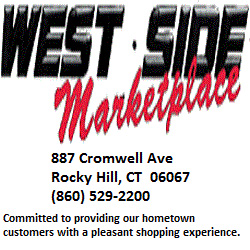

Face the Music Artist Interview: Aaron Neville
By JOBY ROGERS
MIDDLETOWN - Aaron Neville is one of the world’s exceptional R&B singers from New Orleans who got his start in the music industry in the mid-70s as part of a quartet known as the Neville Brothers, featuring Neville along with his brothers Art, Charles and Cyril. The group attained great success, including recording with Branford Marsalis, Keith Richards and Carlos Santana. As a solo artist he has scored four Platinum certified albums and four top-10 hits in the U.S., including three that went to number one on Billboard. Neville has won multiple Grammy Awards as well as a Country Music Award. Neville’s first major hits were the R&B staples â€Е"Tell it Like it Is” and â€Е"Everybody Plays the Fool.” Perhaps he’s best known for his hit duets with the legendary Linda Ronstadt, including â€Е"Don’t Know Much” and â€Е"All My Life.” At 74, Aaron is still actively touring the U.S. and abroad. We chatted from his home in NYC.Hello, Aaron, this is Joby Rogers of â€Е"Face the Music” Thank you for taking the time to talk with me. How are you?
You’re welcome, I’m fine, Joby. How are you?
Not too bad, thanks for asking. We’ll get started. Growing up in New Orleans, which is a city known for its soul, gospel, blues, jazz, creole and funk, in a household full of musical talent, was there ever a thought of being anything other than a musician?
Well, I always did other stuff besides being a musician to make a living. At the time you couldn’t make a living just being a musician, you did it because you loved it.
What were some of your earlier trades?
Well, my first job was setting up pins in a bowling alley. Then I went on to drive trucks and work on the docks on the river front. I painted houses, dug ditches--you name it.
Can you describe the doo-wop atmosphere of those neighborhoods, in particular the Calliope Projects, when you were growing up?
They had an oval playground in our apartment complex where we would rollerskate and ride bicycles. They had benches out there and my brother, Art, who was my first inspiration and the first singer in the family, had a doo-wop group and I was maybe nine years old and they use to sit out on the park bench and harmonize. They’d run me away whenever I went up there to sing with them until I showed them that I could hold a note. Then they’d let me sing with them. So that’s where it all started.
I recently interviewed Mickey Thomas of Jefferson Starship and Marc Cohn, who you may know from his hit â€Е"Walking in Memphis.” They both mentioned deep gospel music influences. You’ve mentioned Sam Cooke, Brook Benton and Otis Redding, among others, as your Soul and R&B influences. Who were some of your Gospel or Creole influences?
Well, I’ll tell you who my influences were. When I was a little boy, my grandmother use to rock me on her lap while listening to the Gospel station and I would hear Mahalia [Jackson], Sister Rosetta Tharpe, Brother Joe May, Blind Boys of Alabama, The Pilgrim Travelers. My mom was a big Nat King Cole fan--her and my dad had all his records in the house. My brother, Art, was a doo-wopper. He worked at a record shop and he’d bring records home by The Clovers, The Orioles and Clyde McPhatter. I heard Sam Cooke when I was 13 and I fell in love with his voice. Back in them days he was the perfect singer.
What was it about music that wanted to make you reach beyond just listening to it and attempt an actual career in the music business?
I had no idea about it being a career. All I knew is that I wanted to sing any kind of way I could, ya’ know? I just looked at it as doing something I loved.
You have a poetry book out called I Am a Song and you keep dozens of poems in your iPhone. Does the basis of your songwriting come from these poems?
Yeah (laughs). How did you know what was in my iPhone? The latest recording I did with Soulive guitarist Eric Krasno is from some of the poems in my book or from my phone that we put into music.
Is there a song you have written that seemed to come out of nowhere?
Matter of fact. I mean, it didn’t come out of nowhere, it had to come out of something someone talked about or lived or something. I have a song called â€Е"Stomping Ground” that’s talking about New Orleans. About all the people I’ve ran across and stuff like that.
What do you think of the theory that great art or songwriting comes from hunger and pain?
Well, that would sure help inspire you to write something you’re feeling. I just write about things I’ve seen and things I’ve lived and what other people go through.
What song of yours are you most proud of?
I have a few. â€Е"Tell It Like It Is” is one. â€Е"Don’t Know Much,” which I did with Linda Ronstadt, â€Е"Yellow Moon” with the Neville Brothers, also. So I couldn’t just say one.
Today’s music industry is a tough business inw hich to flourish. Why have you succeeded in a field where so many have failed? What’s your formula for success?
Maybe my belief in God and asking for guidance and loving what I do. I feel I’ve been blessed really to have the longevity and be able to do all of the different genres of music I’ve done.
Which one of your songs is most autobiographical?
I wrote one called â€Е"To Make Me Who I Am.” It’s my testimony. Not sure if you heard it.
Yes, I have. It talks about your struggles with addiction. From the 60s up until 1981, you had a serious addiction to heroin. Then suddenly you quit with very little outside help. How have you continued to overcome the trappings of fame that have caused the demise of so many artists?
Well, I’m glad to say that I pray a lot. That has helped me through a lot of adversities in my life. I got to the point where I wanted to quit. You know if you don’t want to quit you’re not going to quit. People were telling me you can just leave it alone. No! You can’t. People leave it alone when they put it in their mind that they want to leave it alone. I asked God for help and he gave me help through Saint Jude, the saint of the impossible.
Amen ! How have you changed as an artist over the years?
I don’t really look at it like that. In my mind I’m the same person I was when I was growing up in the Calliope Projects. I’m just a singer, that’s all, that wants to be heard.
In 2005, you were on tour with your brothers when Hurricane Katrina devastated New Orleans, including your home. You stayed away for over a year and a half. You didn’t return until the death and funeral of your first wife Joel (Jo-el). What was that return like for you?
It was bittersweet. It was the hardest time in my life. I never did go back to that house again. I buried Joel and went back to Nashville. We went back to New Orleans for the 2008 Jazz Fest, the first time the Neville’s played the jazz fest since Katrina. While we were there, People Magazine was doing a story on the brothers. Sarah Friedman was a photographer. I saw her and I don’t know if I fell head over heels in love at first but I liked her and started calling her and we got close and started dating and we got married and, as a matter of fact, we have our fifth-year anniversary coming up on the 12th of November.
Congratulations, Aaron.
Thank you.
On May 2 of this year, you joined your brothers to celebrate the Neville family legacy at the Saenger Theatre in New Orleans. Do you have any future plans to record or perform with them again?
That’s an era that’s gone now, ya know. We did 30-something years on the road, it got hard. Now everybody’s doing solo stuff and, like you said, I got a long ways to go and a short time to make it in. I want to do some stuff for myself and, as a matter of fact, it’s given everybody a chance to do stuff for their self. Cyril’s doing great with his group, the Royal Southern Brotherhood. With the brothers, we would play four or five songs a piece each night and everything else was just the band, singing background and playing cowbell and tambourines so that got old and tired and it was time for a new day. But while we were out there, we were kicking ass and taking names.
Artists in the music business are throughly diversified, with more artists than ever crossing over genres. In light of today’s racial unrest in the U.S., what is your general feeling about race relations outside of the music business? And what can artists do to help better the situation?
Try to be positive in your own right, every chance you get. My brother, Cyril, used to say when we finished a Neville Brother show--we’d sing â€Е"Amazing Grace” and Bob Marley’s â€Е"One Love”--and Cyril would say there’s only one race, the human race. That’s how it is. But with over seven billion people on this planet, everyone doesn’t think alike. But it’s been like that since Cain and Abel--people fighting against each other. So all you can do is do your part and make a better day. Help somebody on your way.
Regarding your latest album My True Story, a cover of doo-wop classics, how did you go about choosing the 12 cuts and which one was the most challenging to record?
None of them were challenging because it was stuff I’ve done all my life. They’ve been in my heart since I was a kid. We recorded about 24 songs and we had to pick 12 out of that. That was the hardest job because all of them are good.
What was your favorite to record?
I did a song from the doo-wop era by Jessie Belvin called â€Е"Good Night My Love.” That was one of my favorites. â€Е"Ting A Ling” by the Clovers, â€Е"Work With Me Annie” by Hank Ballard & the Midnighters and â€Е"Be My Baby” by the Ronettes.
The album was produced by Don Was and Keith Richards, whom you’ve worked with before. What was it like to work with Keith this time?
It’s always a joy to be around Keith. I always tell people that he’s the most down to earth guy I know. He’s a big superstar but he’s down to earth. A regular guy. He made a statement saying all these hardened musicians in here acting like a bunch of kids and that’s how that session was. We were all laughing and smiling and enjoying the moment. It was a joy.
Touring can be challenging for anyone. At 74 years old now, what draws you to the road and motivates you at this point and does performing ever get repetitive or are there nights you just wished you were somewhere else rather than on a stage?
No. Every night I’m out there I enjoy it. I look forward to it. I don’t go out as much as I used to with the brothers. We use to be out for months. The most I’ll do now is maybe 10 days at a time. I might do two shows in a row, maybe. I pace myself.
Two of your most well-known recordings were with the legendary Linda Ronstatd. Have you kept in touch with her in the years hence?
I talk to her often. She doesn’t sing anymore because she has Parkinson’s Disease, but I always call her and let her know that her voice is one of the greatest of all time. I can listen to her albums and just fill my heart. She’s a great singer.
Moving forward, how do you carry the heritage and legacy of the Aaron Neville and the Neville Brothers forward through all of the years and keep it fresh and relevant for yourself as well as new fans you’ve connected with along the way?
Just be true to yourself. I just do what I do. That’s the bottom line. I’m a singer, I just go out and sing and try to give my heart and soul with each performance. Each night could be my last ya know (laughs).
Thanks, Aaron, for you candor and honesty. I wish you continued success.
You’re welcome Joby. Take Care.
For more info on Aaron Neville and tour dates, please visit www.aaronneville.com .








